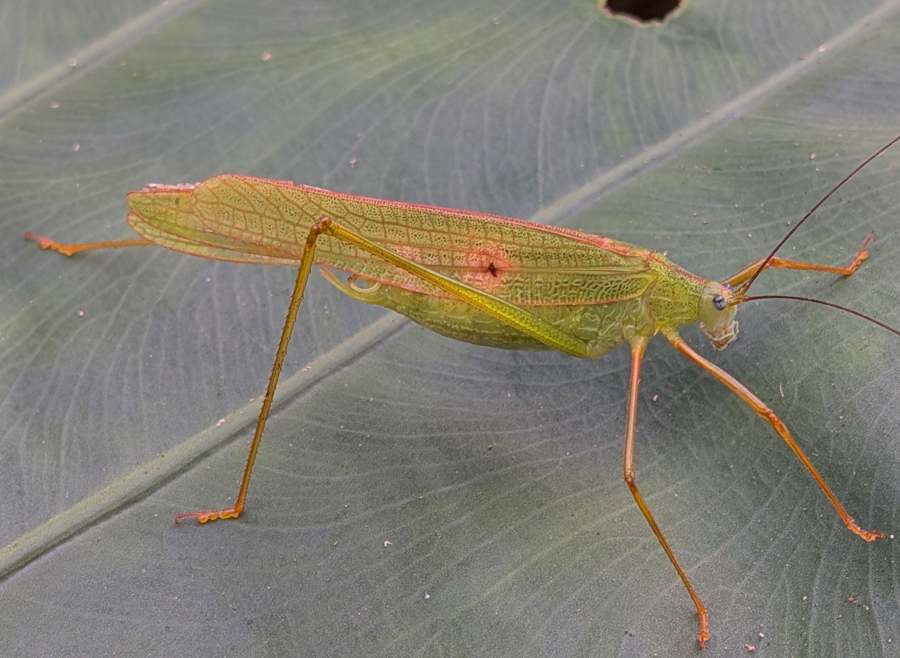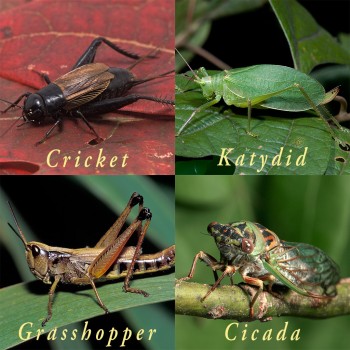I found this slightly-worse-for-wear little one resting on a prehistoric-sized elephant ear (colocasia) plant.

These are not a common sight along my regular hiking trail, and I’m wondering if I only was able to get a photo was because it was a bit rough around the edges. As far as identification, this one is a bit tough. After looking through TaiEOL I believe it may be a Duceti, known in Chinese as a 條螽屬 (tiáo zhōng shǔ). More interesting than the identification of this particular species, are Taiwan katydids as a whole.
According to Taicol, there are more than 71 documented species of katydid (Tettigoniidae) in Taiwan, with some found nowhere else on Earth, and new species still be being discovered. The larger Phyllophorina kotoshoensis, which has a far more distinctive leaf-like appearance, is what you’ll probably see if you do a search for Taiwan katydids. I’ve only come across a few of these, and I’ve unfortunately never been able to get a decent photo.
At first glance, many will assume they are looking at some sort of grasshopper, and while they are both of the order Orthoptera, there are morphological differences which make them quite distinct. Even within katydids there is significant variation.

Katydids will often have longer antennae, a differently shaped ovipositor (egg laying organ) below the abdomen, as well as a bulkier frame and thinner legs in comparison to grasshoppers and crickets. A key difference is the way they perform stridulation, which is the distinctive chirping crickets are known for. Whereas grasshoppers and locusts (another Tettigoniidae) will rub together rows of spikes found along their legs, katydids and crickets rub their wings together. None of these are as loud as the cicadas which can drown out a forest with their distinctive droning.
The songs that katydids of different species make are distinct, and while they don’t have ears in the tradtional sense, they do have tympanal organs located on their front legs. This positioning on the front legs allows them to move and determine directionality of other katydids.
I plan to add more here as I learn more about these, especially related to Chinese culture. It does seem there is mention of them in a number of Song Dynasty poems.